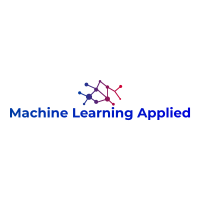A new message passing graph neural network with attention is presented here as applied to small molecule predictive machine learning tasks.
In this paper, we describe a self-attention-based message-passing neural network (SAMPN) model, which is a modification of Deepchem’s MPN [16] and is state-of-the-art in deep learning. It directly learns the most relevant features of each QSAR/QSAPR task in the learning process and assigns the degree of importance for substructures to improve the interpretability of prediction. Our SAMPN graph network utilizes the chemical graph structure described above, where each edge is derived from the chemical bond and each atom is the node. Both our message passing neural network (MPN) and SAMPN model can be used as multi-target models (Multi-MPN or Multi-SAMPN), which can learn not only the relationship between chemical structures and properties, but also the relationship between intrinsic attributes of molecules.
In a chemical graph, atoms denote the node set x∈V, and bonds denote the edge set (x,y)∈E. Each edge has its own direction in the SAMPN model. N(x) or N(y) stands for the group of neighbor nodes of x or y, respectively. z∈N(x)∖y means the neighbors of x do not contain y. Node x is allowed to send a message to a neighbor node y only after node x has received messages from all neighbor nodes except y. We use the skip connection in the message passing steps as in Fig. 2 (displayed in between neighbor features and self-features). This skip connection allows the message to pass a very long distance without vanishing gradient problem when using backpropagation. The generated messages exchange and update based on the merged node-edge feature and the previous message passing step as Eq. (2) defined.
Below is the abstract of A self-attention based message passing neural network for predicting molecular lipophilicity and aqueous solubility.
Efficient and accurate prediction of molecular properties, such as lipophilicity and solubility, is highly desirable for rational compound design in chemical and pharmaceutical industries. To this end, we build and apply a graph-neural-network framework called self-attention-based message-passing neural network (SAMPN) to study the relationship between chemical properties and structures in an interpretable way. The main advantages of SAMPN are that it directly uses chemical graphs and breaks the black-box mold of many machine/deep learning methods. Specifically, its attention mechanism indicates the degree to which each atom of the molecule contributes to the property of interest, and these results are easily visualized. Further, SAMPN outperforms random forests and the deep learning framework MPN from Deepchem. In addition, another formulation of SAMPN (Multi-SAMPN) can simultaneously predict multiple chemical properties with higher accuracy and efficiency than other models that predict one specific chemical property. Moreover, SAMPN can generate chemically visible and interpretable results, which can help researchers discover new pharmaceuticals and materials. The source code of the SAMPN prediction pipeline is freely available at Github (https://github.com/tbwxmu/SAMPN).





Keep up the incredible job !! Lovin’ it!